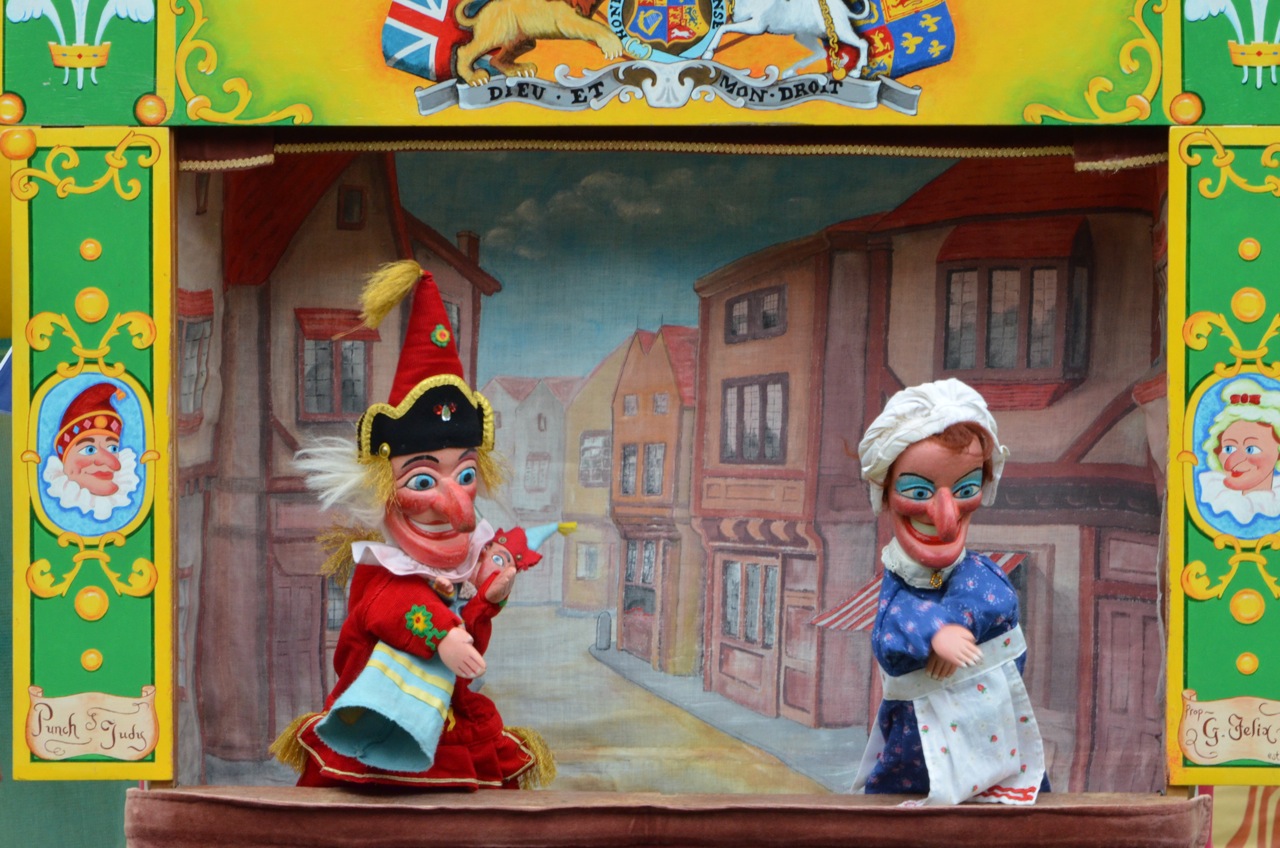WORLD PUPPETRY DAY, 2014
March 21 is World Puppetry Day! Celebrate the rich history and culture of puppetry styles from across the globe. Take a look a upcoming live performances at Puppet Showplace: CALENDAR
Did you know that the first puppet show was performed 3,000 years ago? Or that puppets were often used in religious rituals? That’s a lot of puppet history to cover!


Sicilian marionettes (ITALY):
Also known as the Opera dei Pupi (The Opera of the Puppets), puppet shows became immensely popular in Italy in the late middle ages. The handcrafted wooden marionettes often depicted historical events loosely; medieval knights and their battles were also favored performances. The puppet industry was dominated by several affluent and skilled craftsmen and their families.

Bunraku (JAPAN):
Bunraku is a traditional Japanese puppet style that involves chanting and complex mechanical puppets that have been around since 1684. Bunraku is notable for the sophisticated mechanical design of the heads of the puppets- their mouths, noses, eyes, eyebrows, and sometimes entire faces can be moved and changed. Each puppet requires three puppeteers to operate. Generally a single chanter will sit on a platform on the stage and recite all of the play’s text.

Mua Roi Nuoc (VIETNAM):
Emerging from the common occurrence of rice fields flooding, Mua Roi Nuoc is a Vietnamese form of puppetry that is performed in waist deep water. The rod puppets are built out of wood, then lacquered. Puppeteers manipulate a large rod that supports the puppet from under the water, and are generally hidden themselves behind a screen or other set piece. The illusion created is of a puppet moving by itself across the water. This tradition dates back to the 11th century.

Punch and Judy (GREAT BRITAIN):
Debuting in 1662, Punch and Judy are a married couple whose antics are performed in a series of short scenes that typically have a violent ‘punch’line. Punch and Judy are glove puppets, controlled by a single puppeteer from within a colorful booth. Punch and Judy performances involve a lot of improv- puppeteers add on to the storyline and embellish as they see fit. Though the tradition started in Great Britain, Punch and Judy performances have spread all over Europe.
March 21 is World Puppetry Day! Celebrate the rich history and culture of puppetry styles from across the globe. Take a look a upcoming live performances at Puppet Showplace: CALENDAR
Did you know that the first puppet show was performed 3,000 years ago? Or that puppets were often used in religious rituals? That’s a lot of puppet history to cover!
Wayang Puppets (INDONESIA):
Wayang means “Shadow” in Javanese; Wayang puppets are popular shadow puppets used in performances in Indonesia. The first recorded performance in Indonesia was in 930 CE. Wayang puppets usually act out either religious stories, or stories from the “Ramayana,” an ancient epic Hindu poem written in India about 3,000 years ago.
Wayang means “Shadow” in Javanese; Wayang puppets are popular shadow puppets used in performances in Indonesia. The first recorded performance in Indonesia was in 930 CE. Wayang puppets usually act out either religious stories, or stories from the “Ramayana,” an ancient epic Hindu poem written in India about 3,000 years ago.
Sicilian marionettes (ITALY):
Also known as the Opera dei Pupi (The Opera of the Puppets), puppet shows became immensely popular in Italy in the late middle ages. The handcrafted wooden marionettes often depicted historical events loosely; medieval knights and their battles were also favored performances. The puppet industry was dominated by several affluent and skilled craftsmen and their families.
Bunraku (JAPAN):
Bunraku is a traditional Japanese puppet style that involves chanting and complex mechanical puppets that have been around since 1684. Bunraku is notable for the sophisticated mechanical design of the heads of the puppets- their mouths, noses, eyes, eyebrows, and sometimes entire faces can be moved and changed. Each puppet requires three puppeteers to operate. Generally a single chanter will sit on a platform on the stage and recite all of the play’s text.
Emerging from the common occurrence of rice fields flooding, Mua Roi Nuoc is a Vietnamese form of puppetry that is performed in waist deep water. The rod puppets are built out of wood, then lacquered. Puppeteers manipulate a large rod that supports the puppet from under the water, and are generally hidden themselves behind a screen or other set piece. The illusion created is of a puppet moving by itself across the water. This tradition dates back to the 11th century.
Punch and Judy (GREAT BRITAIN):
Debuting in 1662, Punch and Judy are a married couple whose antics are performed in a series of short scenes that typically have a violent ‘punch’line. Punch and Judy are glove puppets, controlled by a single puppeteer from within a colorful booth. Punch and Judy performances involve a lot of improv- puppeteers add on to the storyline and embellish as they see fit. Though the tradition started in Great Britain, Punch and Judy performances have spread all over Europe.













